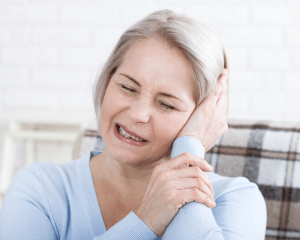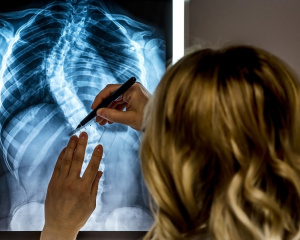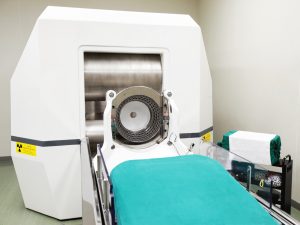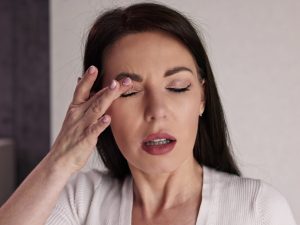Scoliosis requires proper medical treatment but you may also benefit from self-care strategies that help to ease its symptoms. Building these strategies into your day-to-day life can help you manage your condition and maintain a good quality of life – just ask Usain Bolt.
Widely considered to be the greatest sprinter of all time, Bolt was born with scoliosis but it certainly hasn’t held him back. Indeed, he was a world champion 11 times before he retired in 2017. As he stated in 2011: “My spine’s curved really bad…But if I keep my core and back strong, the scoliosis doesn’t really bother me. So I don’t have to worry about it as long as I work hard.“
What is scoliosis?
Scoliosis is a spinal condition where the spine curves sideways, often in an “S” or “C” shape. While some cases are mild, others can be more severe and may require medical intervention. Scoliosis typically develops during childhood or adolescence, but adults can also be affected by degenerative changes in the spine. The most common form of scoliosis is idiopathic, meaning its cause is unknown. However, it can also be linked to congenital issues, neuromuscular conditions, or degenerative diseases.Common symptoms of scoliosis
Symptoms of scoliosis can vary depending on the severity of the curvature but may include:- Uneven shoulders or hips
- Visible spinal curvature
- Back pain or stiffness
- Reduced range of motion
- Fatigue from strained muscles
- Push the ribcage against the heart and lungs, leading to breathing problems and increasing the risk of conditions like pneumonia and heart failure
- Make bones press on the nerves, causing difficulties such as:
- Back pain
- Numbness or weakness in the legs
- Incontinence
Treatment options for scoliosis
Treatment for scoliosis depends on the severity of the condition and the person’s age. Common treatment options include:Bracing
Braces are typically used in children and adolescents to hold their spines in the correct position and prevent further spinal curvature as they grow. The Scoliosis Research Society recommends bracing for people who:- Have a spinal curve of 20-40 degrees that is neither too high nor too low on the spine
- Have at least another 18 months of growing before reaching maturity
- Are prepared to wear the brace for 16-20 hours each day until they stop growing.
Surgery
In more severe cases, surgery may be recommended. Spinal fusion is the most common surgical procedure for scoliosis, involving the permanent joining of two or more vertebrae to straighten the spine and prevent further curvature. At Macquarie Neurosurgery and Spine, our team of neurosurgeons offers treatment for adult spinal deformities, with extensive experience in providing care tailored to individual patient needs. Surgery should always be considered only after a consultation with a specialist to discuss potential risks and benefits.Self-care strategies for scoliosis management
In addition to medical treatment, incorporating self-care strategies into daily routine can help alleviate discomfort, improve mobility and enhance overall quality of life.1. Exercise regularly
Regular physical exercise is good for the human body and mind, and this includes people living with scoliosis. There is no evidence to suggest that any particular exercise or sport is harmful for people with scoliosis, so if you have a favourite sport or activity, you should be able to enjoy it. A systematic review and meta-analysis of core-based exercise in people with scoliosis found that such exercises could help to improve quality of life.Focus on low-impact exercises that promote core strength, flexibility, and posture such as swimming, yoga, and Pilates. Always consult a healthcare provider or physiotherapist for a tailored exercise plan.2. Maintain proper posture
Practising good posture is vital for individuals with scoliosis. Avoid slouching and aim to keep your spine aligned when sitting and standing. Consider using ergonomic furniture, such as supportive chairs and lumbar cushions, particularly if you spend long hours sitting.3. Stretch daily
Incorporating regular stretching into can help reduce muscle stiffness and improve flexibility. Focus on stretches that target the back, hips, and shoulders. Gentle spinal stretches can enhance range of motion, improving overall comfort throughout the day.4. Use heat and cold therapy for pain relief
Heat therapy and cold therapy can temporarily ease muscle pain caused by scoliosis. Apply a heat pack or ice pack for about 20 minutes, taking care not to hurt the skin.5. Maintain a healthy weight
Maintaining a healthy weight through a balanced diet and regular exercise can help ease scoliosis symptoms.Professional support
While self-care is important, professional guidance from healthcare providers is also required to manage scoliosis. Physiotherapists can provide targeted treatments and exercises to improve mobility, reduce pain, and help to prevent further curvature progression.At Macquarie Neurosurgery and Spine, our team includes neurosurgeons with considerable expertise and experience in treating scoliosis and other spinal deformities in adults. Whether exploring conservative treatments or considering surgery, we’re here to guide you through every step of the treatment journey.You can book an appointment with us here.DisclaimerAll information is general and is not intended to be a substitute for professional medical advice. Macquarie Neurosurgery and Spine can consult with you to confirm if a particular treatment or procedure is right for you. Any surgical or invasive procedure carries risks. A second opinion may help you decide if a particular treatment is right for you.References
- Mayo Clinic, Scoliosis, https://www.mayoclinic.org/diseases-conditions/scoliosis/symptoms-causes/syc-20350716, [Accessed 3 October 2024]
- Idiopathic scoliosis in adolescents.” American Association of Neurological Surgeons (AANS), https://www.aans.org/en/Patients/Neurosurgical-Conditions-and-Treatments/Scoliosis, [Accessed 3 October 2024
- WebMD, Scoliosis, https://www.webmd.com/back-pain/causes-scoliosis, [Accessed 3 October 2024]
- Qiabi M, Chagnon K, Beaupré A, Hercun J, Rakovich G. Scoliosis and bronchial obstruction. Can Respir J. 2015 Jul-Aug;22(4):206-8. doi: 10.1155/2015/640573. Epub 2015 Jun 17. PMID: 26083538; PMCID: PMC4530852, https://www.ncbi.nlm.nih.gov/pmc/articles/PMC4530852/#, [Accessed 3 October 2024]
- Healthdirect, Scoliosis, https://www.healthdirect.gov.au/scoliosis#symptoms, [Accessed 3 October 2024]
- Scoliosis Australia, Bracing in scoliosis, https://www.scoliosis-australia.org/about-scoliosis/bracing-in-scoliosis/, [Accessed 3 October 2024]
- American Academy of Orthopedic Surgeons, Surgical treatments for scoliosis, https://orthoinfo.aaos.org/en/treatment/surgical-treatment-for-scoliosis/#, [Accessed 3 October 2024]
- Scoliosis Support and Research, Posture and positioning, https://ssr.org.uk/scoliosis/posture-and-positioning/#:, [Accessed 3 October 2024]
- MedicalNewsToday, 7 best stretches and exercises for scoliosis, https://www.medicalnewstoday.com/articles/325385#effectiveness, [Accessed 3 October 2024]
- Scoliosis Support and Research, Complementary therapies, https://ssr.org.uk/scoliosis/non-surgical-scoliosis-treatments/, [Accessed 3 October 2024]
- Cleveland Clinic, 5 surprising facts about scoliosis, https://health.clevelandclinic.org/5-surprising-facts-about-adult-scoliosis-2, [Accessed 3 October 2024]
- Physiopedia, Scoliosis, https://www.physio-pedia.com/Scoliosis, [Accessed 3 October 2024]






